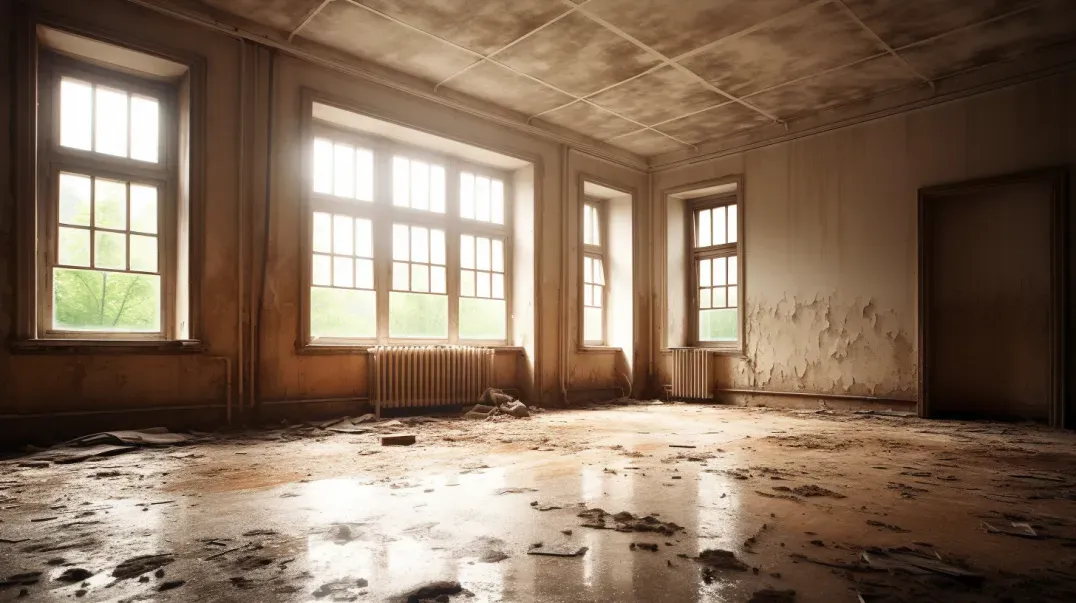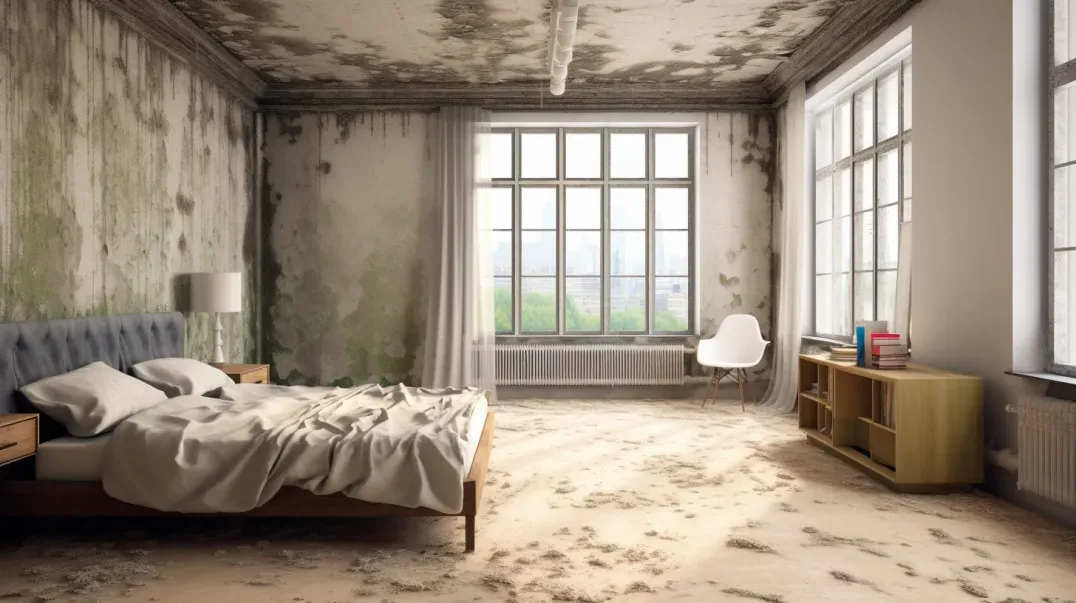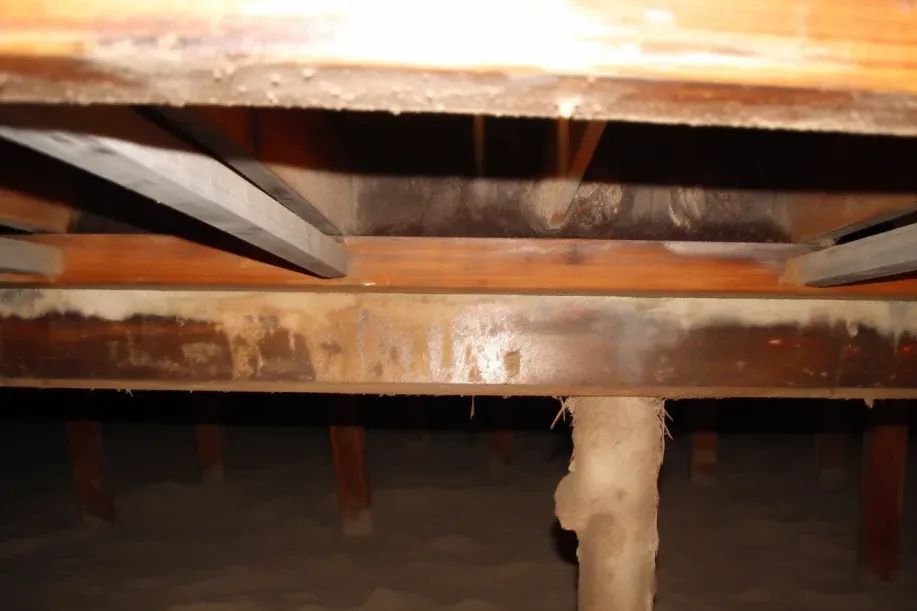Moisture and Mold Correlation in Crawl Spaces
Welcome to our insightful exploration into the often-overlooked realm of crawl spaces, a common yet hidden breeding ground for mold. This blog aims to shed light on the prevalence of mold in these concealed areas of our homes and buildings, unraveling the intricate relationship between moisture and mold growth.
Crawl spaces, due to their unique location and conditions, are particularly susceptible to mold infestation. Often out of sight, these areas can create the perfect storm for mold proliferation, posing significant challenges to property integrity and indoor air quality. Understanding the dynamics of mold growth in crawl spaces is not just a matter of curiosity but a crucial step towards ensuring a healthy living environment.
The key to this understanding lies in the direct correlation between moisture and mold growth. Mold spores, which are naturally present in the air, require moisture to germinate and thrive. In crawl spaces, factors such as poor ventilation, water leaks, and ground moisture can elevate humidity levels, creating an ideal habitat for mold. This blog will delve into how these moisture sources contribute to mold growth and the ways in which they interact with the unique environment of crawl spaces.
Join us as we navigate through the complexities of mold in crawl spaces, offering insights and solutions to tackle this hidden menace. Our journey will equip you with the knowledge to identify, prevent, and address mold issues, safeguarding your property and health.
Understanding the Science of Mold Growth
Gaining a scientific understanding of mold growth is essential for effectively managing and preventing mold-related issues in various environments. This section delves into the biology of mold and the pivotal role of moisture in its development.
What is Mold and How Does it Grow?
Mold is a type of fungus that plays a crucial role in the ecosystem by decomposing organic matter. However, when it grows unchecked in indoor environments, it can pose health risks and damage structures.
- Biology of Mold: Mold reproduces through tiny spores that are invisible to the naked eye and can easily spread through the air. When these spores land on a suitable surface with adequate moisture, they begin to grow and multiply.
- Ideal Growth Conditions: Mold thrives in moist, warm, and poorly ventilated areas. Common indoor habitats include damp basements, bathrooms, kitchens, and areas with water leaks or flooding. Mold can grow on various materials like wood, paper, carpet, and foods.
- Growth Process: Once a mold spore settles on a suitable surface, it grows by extending hyphae, which are tiny filament-like structures. These hyphae absorb nutrients and moisture from the surface, allowing the mold colony to expand and potentially produce more spores.
The Role of Moisture in Mold Development
Moisture is the most critical factor in mold growth, and understanding its role is key to controlling mold.
- Moisture as a Growth Enabler: Mold spores need moisture to start growing. Without sufficient moisture, spores remain dormant. Therefore, controlling indoor humidity and promptly addressing water leaks are essential in preventing mold growth.
- Sources of Moisture: Common sources include leaking pipes, flooding, condensation (often due to high humidity or poor ventilation), and damp materials like wet clothing or carpets.
- Moisture and Mold Types: Different mold species have varying moisture requirements. Some molds can grow in relatively dry conditions, while others need significant amounts of water. This variability means that almost any damp environment can be susceptible to some form of mold growth.
- Preventing Moisture-Induced Mold: Effective strategies include ensuring good ventilation, using dehumidifiers in damp areas, fixing leaks, and drying wet materials quickly.
In conclusion, understanding the science behind mold growth, particularly the role of moisture, is crucial for effective mold prevention and control. This knowledge empowers homeowners, building managers, and others to create environments less conducive to mold growth, thereby protecting property and health.
Identifying Moisture Sources in Crawl Spaces
Understanding and identifying the sources of moisture in crawl spaces is crucial for maintaining the structural integrity of buildings and ensuring a healthy living environment. This section provides insights into the common sources of moisture in crawl spaces and how to recognize signs of excessive moisture.
Common Sources of Moisture
Crawl spaces, due to their proximity to the ground and often limited ventilation, are particularly prone to moisture problems. Here are some typical sources of moisture in these areas:
- Ground Moisture: Earth around the crawl space can release moisture, especially if there's inadequate drainage or waterproofing.
- Leaks: Plumbing leaks within or above crawl spaces can lead to significant moisture accumulation.
- Condensation: This occurs when warm, humid air comes into contact with cooler surfaces in the crawl space, leading to water droplets and high humidity levels.
- External Water Intrusion: Rainwater or groundwater can seep into crawl spaces, particularly if there's poor exterior drainage or grading.
- Vapor Diffusion: Moisture can permeate through concrete walls and floors of crawl spaces from the surrounding soil.
- HVAC Systems and Ductwork: Leaky or poorly insulated ducts in crawl spaces can contribute to moisture through condensation.
Signs of Excessive Moisture
Recognizing the signs of excessive moisture in crawl spaces is key to addressing potential problems before they escalate. Here are indicators to watch for:
- Visible Mold and Mildew: These are clear signs of moisture issues. Mold can appear in various colors and may have a musty odor.
- Condensation: Look for water droplets on crawl space surfaces, pipes, or insulation.
- Wood Rot: Excessive moisture can cause wood to decay, which can compromise the structural integrity of the building.
- Rust on Metal Components: Moisture can lead to rust on metal fixtures, pipes, or tools stored in crawl spaces.
- Musty Odors: A persistent musty smell is often indicative of moisture problems and potential mold growth.
- Efflorescence: White, powdery deposits on walls or floors indicate water seepage and evaporation.
- Increased Humidity: A general feeling of dampness or higher than normal humidity levels can be a sign of moisture issues.
Addressing these moisture sources and signs is essential for preventing mold growth and ensuring the longevity of your property. Regular inspections and timely interventions can mitigate the risks associated with crawl space moisture.
The Relationship Between Moisture Levels and Mold Types
Understanding the intricate relationship between moisture levels and the types of mold that thrive in these conditions is crucial for effective mold management and remediation. This section explores different molds that are associated with various moisture levels and provides tips on identifying mold types based on known moisture issues.
Different Molds for Different Moisture Levels
Molds have varying requirements for moisture and can thus be indicative of the moisture conditions in an environment. Here's an overview of mold types and their corresponding moisture preferences:
- High Moisture Molds: These molds, such as Stachybotrys (often referred to as black mold), require constant high moisture levels to grow. They are commonly found in areas with ongoing water damage, leaks, or severe humidity issues.
- Moderate Moisture Molds: Molds like Aspergillus and Penicillium thrive in environments with moderate moisture levels. These are often found in areas with intermittent water exposure or moderate humidity.
- Low Moisture Molds: Some molds, such as Wallemia, can grow in relatively dry conditions. They might be found in areas with minor dampness or where moisture levels are generally low but consistent.
- Understanding these preferences can help in identifying potential mold issues based on the moisture conditions of an area.
H3: Identifying Mold Based on Moisture Sources
Identifying the type of mold in your environment can often be inferred from the moisture sources and conditions present. Here are some tips:
- Assess the Moisture Source: Identify whether the moisture is due to high humidity, water leaks, condensation, or flooding. Different molds are associated with different moisture sources.
- Consider the Duration of Moisture Exposure: Molds like Stachybotrys are more likely to be found in areas that have been wet for an extended period, while molds like Aspergillus may develop in areas with shorter-term moisture exposure.
- Observe the Growth Pattern: Some molds spread quickly in high-moisture environments, while others grow slowly in less damp conditions.
- Note the Color and Texture: While color is not a definitive indicator of mold type, it can provide clues when combined with knowledge of the moisture conditions. For example, black or dark green molds in a consistently wet area might suggest Stachybotrys.
- Consider the Material: Different materials retain moisture differently, and some molds have preferences for certain materials. For instance, molds that thrive in high moisture may be more prevalent on organic, absorbent materials like wood or drywall.
By understanding the relationship between moisture levels and mold types, you can better assess and address mold issues in your environment. However, it's important to note that professional assessment is often required for accurate mold identification and effective remediation.
Health and Structural Implications of Mold in Crawl Spaces
Mold in crawl spaces is not just a cosmetic issue; it poses significant health risks and can compromise the structural integrity of buildings. This section explores the diverse health issues caused by different types of mold and how mold can affect the integrity of building materials.
Health Risks Associated with Mold
Mold in crawl spaces can lead to various health problems, depending on the type of mold and the individual's sensitivity. Here are some common health risks:
- Allergic Reactions: Many people are allergic to mold spores. Exposure can lead to symptoms like sneezing, runny nose, red eyes, and skin rash.
- Respiratory Problems: Molds can cause respiratory issues, including coughing, wheezing, and in severe cases, asthma attacks. People with pre-existing respiratory conditions are particularly vulnerable.
- Toxic Effects: Certain molds produce mycotoxins that can be harmful when inhaled. Long-term exposure to these toxins can lead to more serious health issues, including neurological problems.
- Immune System Suppression: Exposure to mold can suppress the immune system, making individuals more susceptible to other infections.
The health risks underscore the importance of addressing mold issues in crawl spaces promptly and effectively.
Impact of Mold on Home Structures
Mold in crawl spaces can also have detrimental effects on the structural elements of a home:
- Wood Decay: Mold feeds on organic materials, including wood. Over time, mold can weaken wooden structures in crawl spaces, leading to decay and compromising the building's structural integrity.
- Corrosion of Metal Components: Mold can increase the humidity level in crawl spaces, which can lead to the corrosion of metal components like pipes, ductwork, and hardware.
- Insulation Damage: Mold can grow on and degrade insulation materials, reducing their effectiveness and necessitating costly replacements.
- Reduced Air Quality: Mold in crawl spaces can affect the overall indoor air quality of the home. Spores can spread to living areas, contributing to health issues and a musty odor throughout the house.
- Impact on Property Value: Beyond the immediate structural damage, the presence of mold can significantly reduce a property's value and make it difficult to sell.
Addressing mold in crawl spaces is crucial not only for the health of the occupants but also for maintaining the structural integrity and value of the home. Regular inspections, moisture control, and prompt remediation are key strategies in managing mold-related issues in crawl spaces.
Assessing and Measuring Moisture in Crawl Spaces
Effective moisture management in crawl spaces is essential for preventing mold growth and ensuring structural integrity. This section introduces tools for measuring humidity and moisture and provides a step-by-step guide to conducting a moisture assessment in crawl spaces.
Tools for Measuring Humidity and Moisture
To accurately assess moisture levels in crawl spaces, specific tools are required:
- Moisture Meters: These devices are designed to measure the moisture content in various materials, including wood, drywall, and concrete. They come in two types: pin-type meters, which measure moisture content by penetrating the material, and pinless meters, which use electromagnetic signals to measure moisture without damaging the surface.
- Hygrometers: A hygrometer measures the humidity level, or the amount of moisture in the air. Digital hygrometers can provide precise readings and are particularly useful in assessing the overall humidity level in a crawl space.
- Using these tools, homeowners and professionals can accurately gauge moisture levels, which is the first step in addressing any potential moisture-related issues.
Conducting a Moisture Assessment
A thorough moisture assessment in crawl spaces involves several steps:
- Initial Inspection: Visually inspect the crawl space for any signs of moisture, such as water pooling, mold growth, or condensation on surfaces.
- Measure Material Moisture Content: Use a moisture meter to check the moisture content of various materials in the crawl space. Pay special attention to wooden structures and foundation walls.
- Check Air Humidity Levels: Use a hygrometer to measure the humidity level in the air. A humidity level above 60% can promote mold growth and should be addressed.
- Identify Moisture Sources: Look for potential sources of moisture, such as leaks, poor drainage, or inadequate ventilation.
- Document Findings: Record the moisture levels and any signs of moisture issues. This documentation can be useful for future reference or if professional remediation is needed.
- Regular Monitoring: Regularly monitoring moisture levels in crawl spaces is crucial, especially during wet seasons or after addressing any moisture issues, to ensure that the space remains dry.
By systematically assessing and measuring moisture in crawl spaces, homeowners can proactively manage moisture levels, preventing mold growth and protecting the structural integrity of their homes.
FAQs
Contact Lowcountry Crawlspaces Today!
Lowcountry Crawlspaces will do everything we can to ensure your experience with us is excellent.
Request A FREE Estimate
CHECKOUT RECENT POST



Schedule Your FREE Crawl Space Evaluation Today
There Is No Crawl Space Job We Can’t Fix!




